Definition
Just like there are single quotes (', ‘ and ’) and double quotes (", “ and ”) in English, there are single "hook brackets" and "double hook brackets" in Japanese.
- kagikakko
かぎ括弧
「 and 」
Literally "hook brackets" - nijuu kagikakko
二重かぎ括弧
『 and 』
Literally "double hook brackets"
The kagi かぎ in the word kagikakko かぎ括弧 comes from kagi 鉤, which means "hook," and not from the other, more common kagi 鍵 that means "key."
The kakko 括弧 part means "parenthesis," and is often written with katakana instead: kakko カッコ, as in kagikakko かぎカッコ.
The act of "quoting" someone or something is called in'you 引用. In a quotation, you "surround," kakomu 囲む, text with the quotation marks.
Writing Direction
The shape of the quotation mark becomes different according to the direction Japanese is written.
In "horizontal text," yokogaki 横書き, the opening bracket is at top left and the closing bracket is at bottom right. In "vertical text," tategaki 縦書き, the opening bracket is at top right and the closing bracket is at bottom left.
In both cases, the opening and closing brackets form opposite corners of a rectangle.
Usage
The quotation marks are used in multiple ways. They can surround:
- A line: quoting what someone said, or what was written somewhere, or what a character will say, or what someone should say.
- A name: what someone, something, or someplace is called, the title of a book, movie, or other work, or the term for a thing.
- A word or phrase: to be interpreted literally, as a noun, expressing its syntax is separate from the rest of the sentence.
Quoting Text
The quotation marks are used when citing what someone said or what was written somewhere.
- Context: Chiyoda Momo 千代田桃, who can't cook like a normal person, is impressed the cooking of Shamiko シャミ子.
- ...sou da ne, Shamiko φ {futsuu ni} win'naa itameteta mon ne
・・・そうだねシャミ子普通にウィンナー炒めてたもんね
That's right, Shamiko was frying wieners {normally}.- itameteta - contraction of itamete-ita, past form of te-iru form of itameru 炒める, "to fry."
- ryouri wa dekiru-n-da ne
料理はできるもんだね
Cooking, [you] can do, huh.- A contrastive wa は, implicating Shamiko can't do other things normally, because she's a klutz, but cooking she can do.
- "wa" tte nan-desu ka!!
「は」ってなんですか!!
What do you mean by "wa"??!!
- Context: Saiki Kusuo 斉木楠雄 uses his mind-reading ability to hear what Kaidou Shun 海藤瞬 is thinking. Specifically, he's listing some strange stuff that he saw Kuboyasu Aren 窪谷須亜連 doing.
- sore ni {{tokidoki yatsu no atama no ue ni {"!?" toiu} {hen na} moji ga arawareru} no mo okashii} to omotte-ita...
それに時々奴の頭の上に「!?」という変な文字が現れるのもおかしいと思っていた・・・
Besides that, [I] also thought {[it] was weird that {sometimes a {strange} {"!?"} character appears above [his] head}}.- It's old trope in manga about delinquents to have !? in almost every panel, which makes Kaidou suspect Kobayasu is a delinquent.
- sore φ mieru no?
それ見えるの?
That is visible? (literally.)
You can see that?
When quoting people, the quoting particles to と and tte って are used, as well as the contraction of to iu という, which is ttsu っつ.
- "hai" to itta
「はい」と言った
[They] said "yes." - "hai" tte itta
「はい」って言った - "hai" ttsutta
「はい」っつった
Due to the existence of such particles, quotation marks aren't strictly necessary in Japanese when quoting people.
- Context: a guy remembers his dark past.
- konaida mo----
こないだもーー
The other day, too... - nee, kimi tte
kanojo toka iru no~?
ねー君って彼女とかいるのー?
Hey, do you have a girlfriend or something like that?- The tte って here is a topic marker, not a quoting marker.
- e...... inai kedo......
え・・・・・・ 居ないけど?
Eh...... [I] don't, but [why are you asking?]......- See also: plewds.
- yappari!
やっぱり!
[Just as I thought]! - kanojo inai tte~~!
彼女居ないってー!
[He said] [he] doesn't have a girlfriend!- Here, quotation marks haven't been used when citing what he said.
- isou ni nai mon ne~~!
居そうに無いもんねー
[He] doesn't seem like [he] would have [one], right~~- Here, a second girl says the guy doesn't looks like he would have a girlfriend. She's judging him by his appearances.
- chou ukeru!
超ウケル!
[That's] super funny!- ukeru
受ける
To receive. (literally.)
To find funny. (slang.)
- ukeru
- fufu'
ふふっ
*giggle*
- Context: Nishikata 西片 is making an habit of exercising. Takagi 高木 teases him.
- {seichou-ki ni kin-tore shi-sugiru} to shinchou tomacchau tte iwareteru no.
成長期に筋トレしすぎると身長止まっちゃうって言われてるの。
It's said that: {if [you] exercise too much during the growth-period (of a child growing in height)}, [your] height ends up stopping [growing].- They say if you exercise too much, you stop growing up!
- tomacchau - contraction is tomatte-shimau 止まってしまう.
- iwareteru - contraction of iwarete-iru 言われている.
Japanese quotes are always literal, also called "direct quotes." English, however, prefers "indirect quotes."
One difference is that the morphological tense of the predicate in reported speech changes to past in English's indirect quotes, but doesn't change in Japanese's direct quotes, due to the temporal reference of an English subordinate clause being relative to utterance time, while of a Japanese on being relative to the superordinate clause.(Ogihara, 1995:69).
- Tarou wa {Hanako ga byouki da} to itta
太郎は花子が病気だと言った
Tarou said: "Hanako is sick." (direct quote.)
Tarou said that Hanako was sick. (indirect quote.)- Simultaneous sequence of tenses: Hanako was sick at the time when Tarou said this.
- Tarou wa {Hanako ga byouki datta} to itta
太郎は花子が病気だったと言った
Tarou said: "Hanako was sick." (direct quote.)
Tarou said that Hanako had been sick. (indirect quote.)- Shifted sequence of tenses: Hanako was sick BEFORE Tarou said this, which implicates she was no longer sick by the time when Tarou said it.
Nested Quotations
Like in English, when a quote contains a quote within, the quotation marks alternative. Typically the single quotation marks (「」) are used for the outermost quote, and the innermost has double quotation marks (『』).
- Hanako wa "hai" to itta
花子は「はい」と言った
Hanako said "yes." - Tarou wa "Hanako wa 'hai' to itta" to itta
太郎は「花子は『はい』と言った」と言った
Tarou said: "Hanako said: 'yes.'"
Character Lines
In novels, light novels, visual novels, games, and so on, quotation marks surround what a character says, that is, their "lines," serifu 台詞.
What to Say
When telling someone to say or write something, quotation marks may surround the text they're supposed to say or write.
- Context: a training arc.
- chotto "nandeyanen" tte tsukkonde!
ちょっと「なんでやねん」ってつっこんで!
[Try] doing a tsukkomi [saying] "why"! - e...?
え・・・?
Eh...? - nandeyanen...
なんでやねん・・・
Why...- See also: Tsukkomi Gesture.
- gata gataaa
ガタガターー
*sound of chairs and desks falling* - guhaaa'
ぐはーーっ
Aaargh!! - {kore kurai hade ni uketa} hou ga ii ka na?
これくらいハデに受けた方がいいかな?
[Do you think] [it] would be better if [I] received [the tsukkomi] [reacting] this much showy? (literally.)- hade
派手
Showy. Gaudy. - Do you think I should react this extravagantly?
- hade
- nandeyanen
なんでやねん
Why.
- Context: a childhood friend of Tadano 只野 wants to be called on first-name basis, without a honorific suffix.
- sono "Osana-san" tte iu no
yamete kure yo.
その「長名さん」っていうのやめてくれよ。
Please stop with that "Osana-san."
Stop calling me "Osana-san." - boku to Tadano-kun no naka janai ka.
ボクと只野くんの仲じゃないか。
It's mine and Tadano-kun's relationship, isn't it?
It's our relationship, isn't it?- Osana-san means they don't have a cold, distant, family-name basis relationship, they have an intimate, friendly, first-name basis relationship.
- pyoko-pyoko
ピョコピョコ
*[hair] bounce bounce* - mukashi mitai ni "Najimi" tte yonde kure.
昔みたいに「なじみ」って呼んでくれ。
Like old times, call me "Najimi."
Around Names of Stuff
Quotation marks may surround names of things, places, acts, people, and so on, specially the first time they're referred to. In particular, it's common to surround titles of books and fictional works with quotation marks.
This practice doesn't exist in English. In English, while we may surround by quotes terms for things that are unusual, we do not say, for example, "One Piece" in quotes just because One Piece is a book, or "Matrix," or "The Lord of the Rings."
The most similar thing in English is using italicized text when citing titles of things. However, since in Japanese the quotation marks can also surround names of PLACES and even PEOPLE, it's not really the same thing.
- Context: a cat robot gives an item to a kid.
- "Arabin no Ranpu" da.
「アラビンのランプ」だ。
It's the "Alabin's Lamp." - kosutte-mi na.
こすってみな。
Try rubbing [it].- kosutte-miru 擦ってみる - rub [it] and see [what happens].
- na な after ren'youkei 連用形 forms an imperative.
- goshigoshi
ゴシゴシ
*rub rub* - a'
あっ。
Ah. - haai, goshujinsama.
はあい、ご主人さま。
Yees, master. - kemuri no robotto da yo.
けむりのロボットだよ。
[It] is a smoke robot.
- Context: a character sitting in agura あぐら position introduces himself, as does his wife.
- washi wa {San no chichioya de} Seto-uchi-gyorui-rengou Seto-gumi Kumi-chou "Seto Gousaburou" ja
儂は燦の父親で瀬戸内魚類連合瀬戸組 組長 『瀬戸豪三郎』じゃ
I {am Sun's father and} Seto's Inner Fish-kind Alliance, Seto Group's Boss, "Seto Gousaburou."- ja じゃ - same as da だ copula, used by characters that sound old.
- dosu
ドス
*thud* - sono tsuma "Seto Ren"
その妻『瀬戸蓮』!
[His] wife, "Seto Ren"! (literally.)- sono その - "of the aforementioned."
- sono hito no tsuma
その人の妻
The aforementioned person's wife.
- Context: Fukuda Shinta 福田真太 warns fellow manga artist Niizuma Eiji 新妻エイジ.
- Niidzuma-kun wa puro toshite no jikaku ga nasa-sugiru
新妻くんはプロとしての自覚がなさ過ぎる
Niizuma-kun, [you] lack self-awareness as a professional too much. (literally.)
- {jibun ga tanoshiku kakitai} dake nara doujinshi demo kaitereba ii
自分が楽しくて描きたいだけなら同人誌でも書いてればいい
If [you] only {want to draw having fun} then [you] should just draw a doujinshi. - shikashi {"Janpu" de kaku} puro nanda
しかし「ジャンプ」で描くプロなんだ
But [you] are a professional [who] {draws at Jump}.- Shounen Jump 少年ジャンプ is the name of a well-known manga magazine that targets "male kids and teenagers," i.e. a shounen 少年 demographic.
- {dokusha wo tanoshimaseru} koto wo dai-ichi ni kangaenakereba dame da
読者を楽しませる事を第一に考えなければダメだ
[You] have to make {entertaining readers} the number one [priority].- In other words, a doujinshi artist draws manga to entertain themselves, while a professional draws manga to entertain the audience.
Around Unusual Terms
Besides names of things, quotation marks also often surround unusual terms the first time they're used.
In general, while emphasis in English is expressed through bold or italics, emphasis in Japanese is expressed through dots in the furigana space. The quotation marks are only used to emphasize a word when it's being introduced in a text.
- Context: three girls have been summoned into a world called Cephiro, and are told they can't just go back home now.
- {"isekai" kara kono "Sefiiro" ni "shoukan" sareta} mono wa mizukara no ishi dewa mou moto no sekai ewa modoren
『異世界』からこの『セフィーロ』に『召喚』された者は自らの意思ではもう元の世界へは戻れん
Someone [who] {has been "summoned" from "another world" into this "Cephiro"} can't any longer by [their] own volition return to [their] former world.- Here, the fact that the girls are from "another world," that they have been "summoned," and that this world is called "Cephiro," have been emphasized through the use of quotation marks.
- Context: Rudeus Greyrat ルーデウス・グレイラット speaks the absolute truth of the universe.
- kane de "dere" wa kaenai-n-desu yo!!!
金で「デレ」は買えないんですよ!!!
Money can't buy "dere"!!!
[You] can't buy "dere" with money!!! (literally.)- dere - the second half of tsundere ツンデレ, and related ~dere words.
- kaenai - negative form of kaeru 買える, potential verb from kau 買う, "to buy."
- Context: background characters gossip.
- aitsu zettai "chuunibyou" da yo na~~
アイツ絶対「中二病」だよな~
He's definitely "chuunibyou," [isn't he?]- chuunibyou 中二病, "middle school second-year syndrome," also known as simply being an edgelord, because middle school kids are impressionable and start copying the stuff they see in anime, like running like Naruto and so on.
- kou-ni nimo natte, mattaku
高二にもなって 全く・・・
[Even] after becoming a high school second year [student], [good grief]...
Metalanguage
The quotation marks can also surround all sorts of phrases that should be taken literally, when the speaker is talking about a word, phrase, or other text, so the grammar inside the quote is disconnected from the grammar of the rest of the sentence.
- Context: a girl talks about language.
- di tte naa
痔ってなぁ
Hemorrhoids, [you know]. - ......e?
・・・・・・え?
......huh? - yoo hiragana de "ji" yanakute "di" tte kaku yankaaa
よーひらがなで「じ」やなくて「ぢ」って書くやんかぁ
- yoku hiragana de "ji" janakute "di" tte kaku janai ka
よくひらがなで「じ」じゃなくて「ぢ」って書くじゃないか
Often, it's spelled with hiragana not as "じ" but as "ぢ" isn't it? - These are pronounced identically in standard dialect.
- See yotsugana 四つ仮名 for details.
- yoku hiragana de "ji" janakute "di" tte kaku janai ka
- futsuu "chi" ni tenten nanka tsukawahen yo naaa
普通「ち」に転々なんか使わへんよなぁー
Normally you don't add dots to "ち", right? - sonde kono mae jisho de shirabetara "di" mo "ji" ni nattotta-n-yoo
そんでこの前辞書で調べたら「痔」も「じ」になっとったんよー
So, the other way [I] checked the dictionary and "痔" had became "じ".- nattotta - contraction of natte-otta なっておった.
- ...sou ka
・・・そうか
[I see].
- Context: Gojou Satoru 五条悟, who doesn't like to obey rules, is told to obey societal norms.
- ichininshou "ore" wa {yameta} hou ga ii
一人称「俺」はやめた方がいい
[It] would be better if {[you] stopped} [using] the first person pronoun "ore."- ore - a masculine first person pronoun that's not used in formal situations.
- a´?
あ゙?
Ah?
- What did you just say to me???
- toku ni {me-ue no} hito no mae dewa ne
特に目上の人の前ではね
Specially in front of [your] superiors, [alright].- {me-ue no} hito
目上の人
People [who] {are above you}.
[Your] superiors.
- {me-ue no} hito
- {Tengen-sama ni au kamoshirenai} wake dashi
天元様に会うかもしれないわけだし
{[We] might meet Tengen-sama}, [after all].- In this series, Tengen-sama is an important person, as hinted by the fact the ~sama suffix is used with their name.
- "watashi", saitei demo "boku" ni shi na
「私」最低でも「僕」にしな
Use "watashi," at very minimum "boku," [okay].- ~ni suru
~にする
In this case, to choose one thing. Specifically, a pronoun.
- ~ni suru
- Context: Saiki borrows his father's glasses without permission.
- oi~~ megane kaeshite yo~~
オイ~~眼鏡返してよ~
Heey, give [my] glasses back~~ - gaman shite kure chotto me ga "san" ni naru dake daro
我慢してくれちょっと目が「3」になるだけだろ
Please endure [it], [all that will happen is that] [your] eyes will become "threes."- In anime, eyes are drawn like 3's sometimes when a character that needs glasses isn't wearing them.
- megane ga nai to hotondo mienai-n-da yo~~
眼鏡がないとほとんど見えないんだよ~
Without [my] glasses [I] almost can't see. - yon!?
4!?
Fours!?
Exceptionally:
- 「K」 is the title of a series that's awfully hard to look up because someone thought "what if I called this series literally just one single letter" and nobody with common sense was there to stop that person.[see K (TV series) - en.wikipedia.org for a page about the series which I somehow managed to find, accessed 2021-08-05.]
- 「 」, a literal blank space surrounded by quotation marks, read kuuhaku 「 」, literally "blank space," is the name used by siblings Sora 空 and Shiro 白 in No Game No Life ノーガーム・ノーライフ when playing games together as one, a wordplay on the kanji of their names combined spelling kuuhaku 空白.
Qualified Quotes
Syntactically, a direct quote is a noun, and may be qualified by adjectives and relative clauses like any other noun.
- Context: unnecessary.
- peron'
ペロンッ
*lick* - kono aji wa!
この味は!
This taste [is]! - .........
- {uso wo tsuiteru} "aji" daze......
ウソをついてる『味』だぜ・・・・・・
A "taste" of {spewing lies}......
A "taste" of {lying}......
The taste of a liar......- uso wo tsuku - "to spew lies," "to lie."
- Joruno Jobaana!
ジョルノ・ジョバァーナ!
Giorno Giovanna!
- Context: an internet ad from a job-search company, @type, notable for being the origin of a meme.
- On the top=left, osusume jouhou おすすめ情報 means "recommended information."
- uwa'... watashi no nenshuu φ, hiku-sugi...?
うわっ・・・私の年収、低すぎ・・・?
Yikes... my salary, is too low...? - {muryou go-fun de, tekisei nenshuu ya bijinesu kiso nouryoku ga wakaru} "shijou kachi shindan tesuto".
無料5分で、適正年収やビジネス基礎能力が分かる「市場価値診断テスト」。
The "market value diagnosis test" [with which] {in five minutes for free, [you] will know [your] suitable yearly income and base business ability}.
- Here, the quotation marks surround the term for a thing whose merit is described by a relative clause.
- {uketa} hito wa yon-juu-man-nin wo toppa!
受けた人は40万人を突破!
The [number of] people [that] {received [the test]} [has] passed 400 thousand. - {kekka mo sugu wakaru} to dai-ninki da.
結果もすぐ分かると大人気だ。
[Because] {[you] know the results immediately}, [it] is very popular. - CHECK!
- anata no tekisei nenshuu wa?
あなたの適正年収は?
Your suitable yearly income [is]?
Appositives
When the name of a thing is introduced surrounded by quotation marks, the phrase before the term tends to be its description in the form of a noun that refers to the same thing.
When one noun qualifies another, both both refer to the same thing, that's called an appositive. For example:
- otouto no Sasuke
弟のサスケ
The younger brother, Sasuke.- Here, both otouto and Sasuke refer to the same person, and otouto qualifies Sasuke, so it's said to be an apposition.
The same principle applies to quotes. The only difference is that quotes don't seem to require the appositive qualifier to have the no の attributive copula as your typical noun would.
- Context: a series and chapter title drop.
- mizu no wakusei "(Akua) AQUA" e youkoso
水の惑星「AQUA」へようこそ
Welcome to the water planet, "AQUA."- Here, mizu no wakusei is a noun, Akua is also a noun, and both phrases refer to the same thing, so the first phrase qualifies the second in appositive manner.
- Context: in a series about searching for relics in a bottomless pit called the Abyss, Riko リコ is told some important information about a robot boy she found in the Abyss.
- {kare no karada wa tokkyuu ibutsu no katamari de}, osoraku, {Abisu shijou mottomo kachi no aru} ibutsu no hitotsu "Naraku no Shihou (Oobaado)" na no kamoshirenai-n-da
彼の体は特級特急遺物の塊でおそらく アビス史上最も価値のある遺物の一つ「奈落の至宝」なのかもしれないんだ
{His body is a bunch of special-grade relics, and}, likely, could be one of the relics {of most value in all of the Abyss' history}, an "(Aubade) Precious Treasure of The Abyss."- Here, Oobaado is used as gikun 義訓 for Naraku no Shihou, because the name for the thing in this series is "Aubade," and what the word means is "Precious Treasure of The Abyss."
Missing Closing Quotation Mark
Sometimes, when a whole paragraph is quoted, the opening quotation mark is used, but the closing quotation mark is not. This is seen, for example, in games.
- "Raian-dono. tatakai de kizu tsuitara
machi ni modori yado ni tomaru to ii.
「ライアンどの。たたかいで キズついたら
まちにもどり やどに とまるといい。
Ryan-dono, if [you] get injured in battle
it's good if [you] return to town and stay at an inn.- In classic JRPGs, sleeping at an inn heals injuries. So it's good for you to go there and get the damage healed.
「」 vs. 『』
There are a few differences between 「」 and 『』.
- 「」 is the default.
- 『』 is used in nested quotations (「『』」), as「」 tends to be the first choice so it ends up surrounding the outermost quote.
- 『』 is used to quote titles of works, novels, movies, etc., as well as names of people, things, and so on.
Although the above is generally the case, there are exceptions.
Some authors may use 『』 instead of 「」 for quotations, or vice-versa, merely due to a matter of preference, or maybe they just don't know or care about the rules.
- In the Magic Knight Rayearth example above, 『』 was used on shoukan, "summoning."
- In the JoJo example, 『』 was used on aji, "taste."
- In the Bakuman example, 「」 was used on the name of the company Jump.
In particular, note that while in English the default is the double quotes and it's hard to find any reason to deliberately use single quotes, in Japanese the default is the single hook 「」, and the thicker double hook 『』 may be used simply because it looks cooler.
See Katakana Looks Cooler for another example of orthographic choices based on aesthetics.
「「」」
Sometimes, the single hook 「」 is used twice 「「」」 to express that multiple characters have said the same thing in unison. The double hook 『』 also has this function.
For example, if multiple characters said "eeeeh?" in unison, shocked, that could be represented by either:.
- 「「えええぇ?」」
- 『えええぇ?』
Other Marks & Brackets
Besides the hook quotation marks, the Japanese language also makes use of a number of other kinds of brackets and quotes from time to time.
″″, 〝〟
These look like English quote marks or French curly quote marks, but they're actually primes. In Japanese, ″″ and 〝〟, are called:
- daburu-minyuuto
ダブルミニュート
Double minute.- This term comes from English "double" plus the french "minute." This is probably because the prime symbol, ′ , can be used to mark minutes in timing:
- 3′5″
3 minutes, 5 seconds. - As you can see above, the double prime, ″, marks the seconds, so it would make more second if this mark was called "second" in Japanese rather than "double minute." Regardless, it's called double minute.
- chonchon
ちょんちょん
(probably ideophonic.) - nono-kagi
ノノカギ
(from shape, because " looks like ノノ.) - hige-kakko
ひげカッコ
Beard brackets. (this term is rather uncommon.)
This pair of primes are only used like quotes when emphasizing terms. It's unlikely, albeit entirely possible, for them to be used to quote something that someone said.
For example, if I say: a "cat" is an animal, why am I using quotes around that word? Nobody said that word, so I'm not quoting anybody—it came out of nowhere, so I'm not quoting anything. This is the sort of usage the prime has in Japanese.
- Context: in a series about people that have powers called quirks, a doctor examines Midoriya Izuku 緑谷出久, talks about how quirkless people have two joints in his pinky toe, and then says:
- Izuku-kun niwa kansetsu ga futatsu aru
出久くんには関節が2つある
Izuku-kun has two joints. - {kono sedai ja mezurashii...} {nan'no "kosei" mo yadottenai} kata da yo
この世代じゃ珍しい・・・何の“個性”も宿ってない型だよ
A type {rare in this age}, [that] {doesn't [contain] any quirk}.- yadoru
宿る
To dwell. (in this case, for a quirk to dwell in his body, i.e. for a quirk to be contained in him, for him to contain a quirk.)
- yadoru
- Context: this is a manga about swimming.
- ei teeburu
Aテーブル
Table A.- ei エイ - katakanized alphabet letter.
- "sakazuki wo hosu" to kaite!
“杯を乾す”と書いて!
Write [it] as "to dry [one's] sake cup"!- sakazuki - a rather flat cup traditionally used to drink sake, also seen in some anime like One Piece in ceremonies to become sworn brothers and the like.
- "kanpai" to yomu!
“乾杯”と読む!
Read [it] as "kanpai"!
- Sentences such as the above are about how a word, like 乾杯, is written with the same kanji as a sentence that defines the word, like 杯を乾す.
‘’, “”
In Japanese, actual French quotes would be called:
- kuooteeshon maaku
クオーテーションマーク
Quotation mark. (literally.)
This is a single-quote. - daburu kuooteeshon maaku
ダブルクオーテーションマーク
Double quotation mark. (also literally.)
This is a double-quote.
〈〉, 《》
In Japanese, the angle brackets, 〈〉, 《》, are called:
- yamakakko
山括弧
〈〉 "mountain brackets." - nijuu-yamakakko
二重山括弧
《》 "double mountain brackets."
They often work to add emphasis to the text, given they're different, and being different means emphasis.
Sometimes, they can also be used for stylish quotes, specially for characters that speak in unusual manner, like robots.
- Context: a guy was reincarnated in another world as a slime, with a knowledgeable guide called "great sage." Then, he falls in the water, but doesn't suffocate.
- kouiu toki wa, {komatta} toki no "dai kenja"
こういう時は困った時の『大賢者』
In times like these, the "great sage" of {troubled} times. (literally.)- It's a good idea to consult with her when you're troubled, hence {komatta} toki no, "of when {[you] are troubled}."
- sassoku shitsumon shite-mita
早速質問してみた
[I] tried asking [her] promptly. - "kai. suraimu no karada wa masou nomi de ugoite-imasu.
sanso wa hitsuyou dewanai tame, kokyuu wa okonatte-orimasen" - 《解。スライムの身体は魔素のみで動いています。酸素は必要ではない為、呼吸は行っておりません 》
"Answer. the body of a slime moves by magic particles alone. Since oxygen isn't necessary, [the act of] breathing isn't being performed." - souieba..., ishiki shitenakatta ga, kokyuu nante shite-inakatta.
そういえば…、意識してなかったが、呼吸なんてしていなかった。
[Now that you mention it...], [I hadn't paid attention] but, [I] hadn't been breathing.
【】
In Japanese, the "lenticular brackets," 【】, are called:
- sumi-tsuki-kakko
隅付き括弧
Brackets with corners.
They're often seen surrounding the reading of kanji, in place of furigana, specially in dictionaries, including online ones.
- kakko [kakko]
括弧【かっこ】
括弧 is read かっこ
Alternative, they surround the kanji of a word.
- かっこ【括弧】
In all sorts of websites where users upload content, 【】 surrounds a tag, keyword or category. For example:
- [Jiko Shoukai] Hajimemashite! Kizuna Ai desu
【自己紹介】はじめまして!キズナアイですლ(´ڡ`ლ)
[Self-introduction] Nice to meet you! I'm Kizuna Ai - —Kizuna Ai via youtube.com, accessed 2019-01-28. (the English title may show instead if your language is set to English.)
()
The "parentheses,"(), are called:
- maru-kakko
丸括弧
Round brackets. - shou-kakko
小括弧
Small brackets. - paaren
パーレン
Parentheses.
In Japanese, parentheses are used in a number of unique ways.
When you have parentheses around a number in Japanese after someone's name, it's often showing the age of a character that's just been introduced.
- Hayashi, san-juu-ichi
林(31)
Hayashi (31 [years old].)
Anime: Morita-san wa Mukuchi 森田さんは無口 (Episode 1)
- Context: the white rectangle with the awfully round font on the left side shows Morita is 16 years old inside parentheses.
- See also: beta eyes.
Other information may also appear in parentheses, like gender:
- (♂)
Male. (Mars symbol.) - (♀)
Female. (Venus symbol.)
The parentheses can mean a part of a phrase is optional.
- kowaru (wa) nai
怖く(は)ない - "Not afraid."
- kowakunai 怖くない
kowaku wa nai 怖くはない
The variants above, with and without wa, mean basically the same thing.
The parentheses are also used in internet slangs to express emotions.
- kakko-warai
(笑)
(laugh.)- lol.
And all sorts of snark.
Anime: Tensei shitara Slime Datta Ken, 転生したらスライムだった件 (Episode 1)
- otoko (jishou)
漢(自称)
Man among men (self-proclaimed).
This comes from an older usage, in which parentheses are used to express actions of characters in stories, as opposed to their dialogue.
Author: Akutagawa Ryūnosuke 芥川龍之介
Published: Year 3 of the Shouwa 昭和 era, a.k.a. 1922. (see years and eras.)
Source of the image: 三つの宝 - 国立国会図書館デジタルコレクション - dl.ndl.go.jp, accessed 2019-03-22.
The book in plain text, slightly different: 三つの宝 芥川龍之介 - www.aozora.gr.jp, 2019-03-22.
- ou (aza-warafu.) namaiki na! watashi no mantoru no chikara wo miru ga ii.
王 (嘲笑ふ。)生意気な! わたしのマントルの力を見るが好い。
King: (sneers.) naive, [aren't you]! [You shall] see the power of my mantle!- warafu
笑ふ
Ancient pronunciation of warau 笑う, found in "classical literature," kobun 古文. This book isn't all that ancient, though, so it's probably just this character, a "king," that speaks in this ancient way. - See also: Why is ha は pronounced wa? Particles he へ as e, wo を as o?
- warafu
The parentheses are the standard way to add furigana to a word without using a byline layout. It may also be used to associate the reading or kanji of words just like 【】.
- 括弧(かっこ)
- かっこ(括弧)
How to Type
To type 「」 using a Japanese IME software you have to press the two keys to the right of the P letter, between the P letter and the enter key.
If your keyboard has an English International layout, those two keys will most likely be [ and ]. If your keyboard has a Brazilian layout like mine, the keys would be ´ and [. In either case, they will be to the right of the P key.
To type 『』 you must use the IME conversion to convert 「」 into 『』. There's no way to type the nijuu kagikakko 『』 directly from the keyboard. You must type the single kagikakko 「」, press space, and then convert it to 『』.
It may also be possible to type the symbols by their name, kagikakko かぎかっこ, and trying to convert. In this case, the first choice will likely be the word spelled differently (カギカッコ or 鉤括弧), so you'll have to skip those and select a conversion choice further below.
References
- 括弧 - デジタル大辞泉 via kotobank.jp, accessed 2019-01-28.
The dictionary contains the nomenclature of various types of brackets in Japanese. - Ogihara, T., 1995. Tense, Attitudes, And Scope.
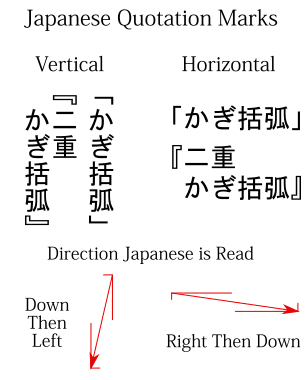
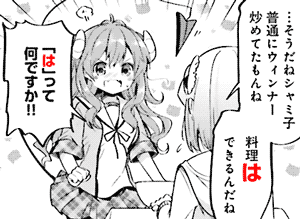

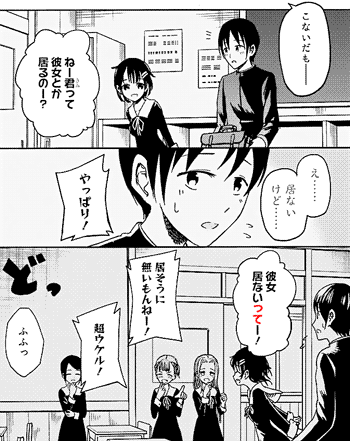


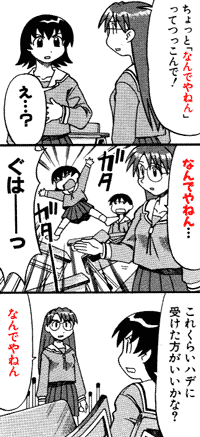
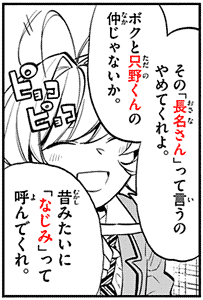
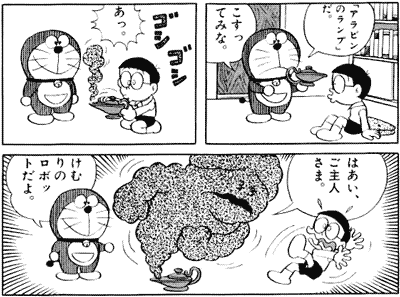
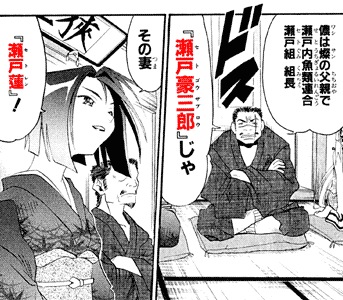

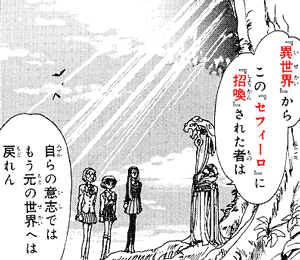
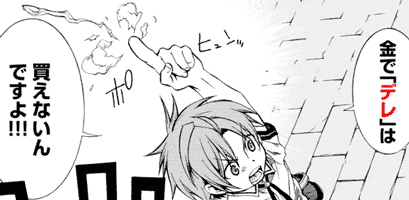
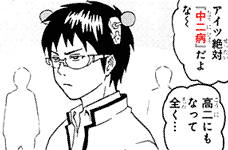
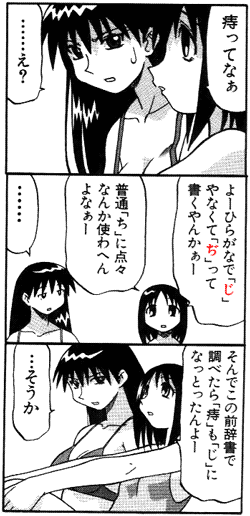
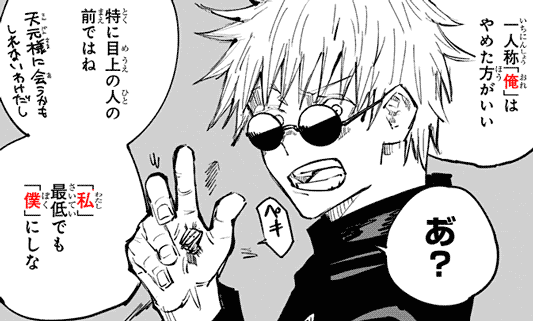
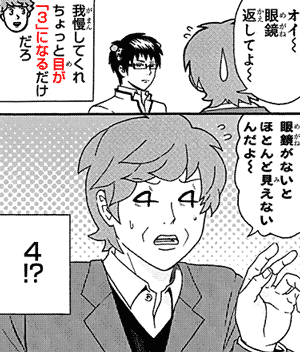
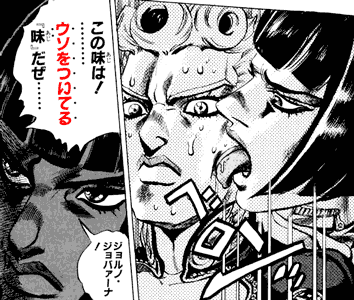
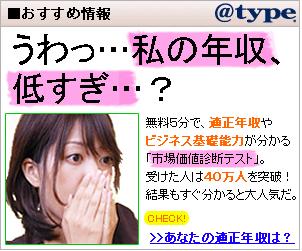
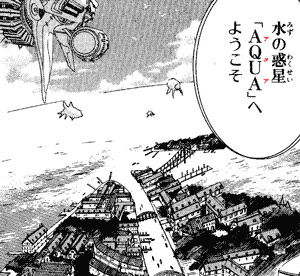
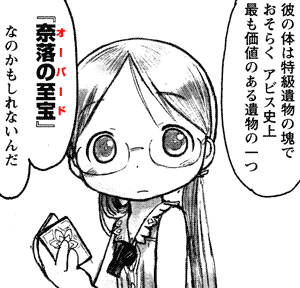
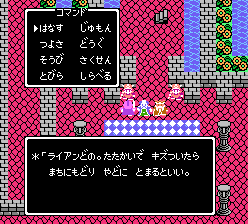
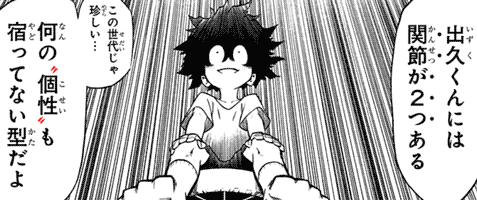
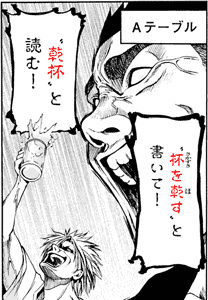
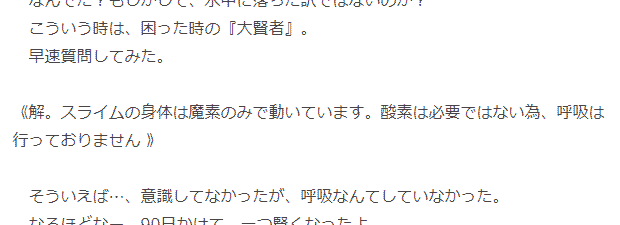
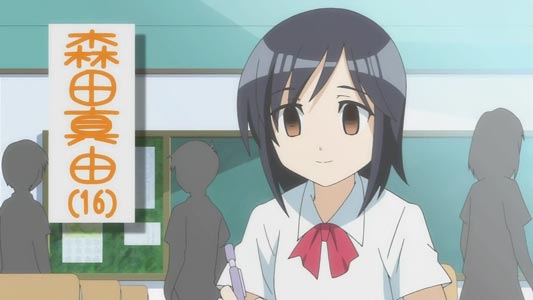


How to type 【 and 】?
ReplyDeleteWith Google IME, type 「」 then press space. It lets you convert that too ()【】『』[]〈〉 and so on.
Delete